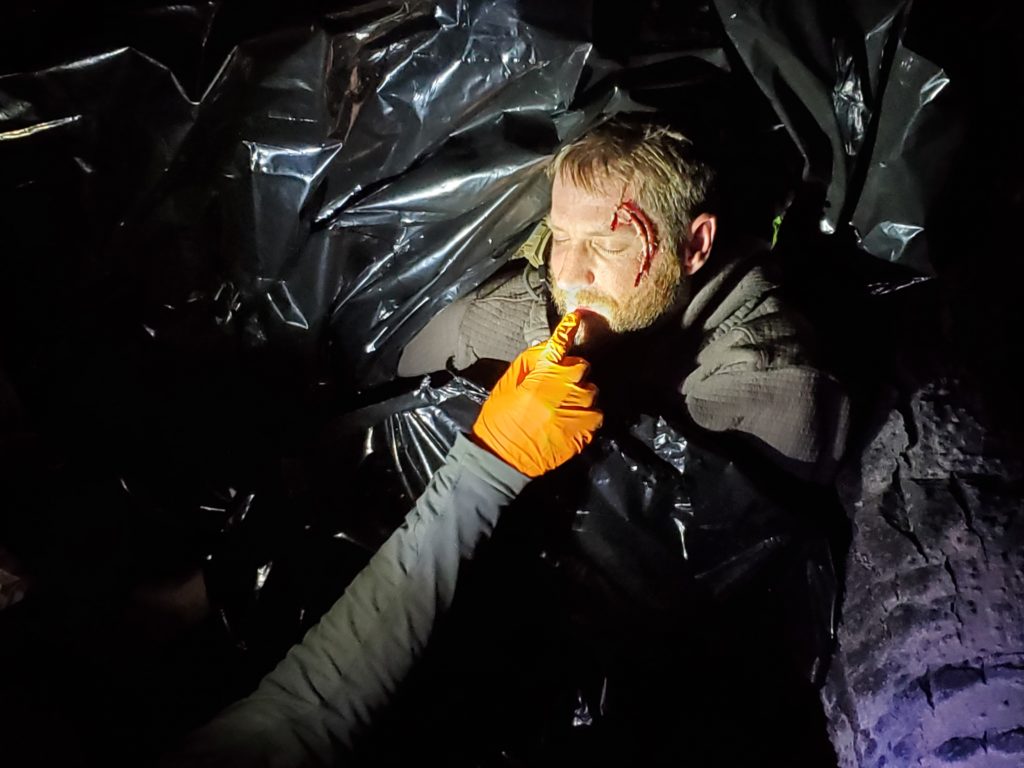Bleeding Control: Does Elevating the Wound Actually Help?

Research is a vital component to medical care. Without medical researchers constantly developing new techniques and testing the effectiveness of old ones, we’d still be stuck with medieval era medicine.
Thankfully, the medical world is a constantly changing and shifting environment, which is why we no longer drill holes in our patient’s head to let out evil spirits and cure mental illness.
Progress is a good thing, and we need to continually question why we do what we do, and if there's a better way.
In 2010, about the time when I was cutting my teeth on trauma medicine, I was taught that elevating the wound was no longer recommended for bleeding control.
This technique was taught for many years in first aid classes around the world, but soon it was questioned if there was any evidence to support it.
It was discovered that there had been no research of any kind to study the effectiveness of wound elevation, and as a result, the procedure quickly fell out of favor.
“The use of limb elevation as an adjunct to direct wound pressure for the control of extremity hemorrhage was for many decades a standard part of first aid and prehospital EMS provider training until 2010, when the practice was widely discontinued due to lack of evidence to support the intervention.” (Du Pont 2018)
This happens all the time as homeopathic and pseudoscience procedures are tested and many of them are found to have little, or no effect.
Passed down from generation to generation of care givers without indication of its actual worth, many of these are thrown away for better researched and more useful methods.
But not all of them.
In 2018, researchers at the University of Pennsylvania studied the effectiveness elevating a wound has on bleeding control.
25 volunteers were bled out for science with these results:
“Participants bled less when the arm was in the elevated position as compared to the blood loss with the arm in a dependent position (0.015 vs. 0.55 grams, respectively, mean difference=0.545, p=0.0002).” (Du Pont 2018)
What Does It Mean?
A change between .015 and .55 grams isn’t a huge difference. But it is something, and when a casualty has lost a great quantity of blood, every little bit counts.
It’s recommended to continue the procedure of elevating a heavily bleeding wound in order to more efficiently control bleeding.
Because this is a small change, don’t make this a focus of your treatment, but use it instead as an additional step if possible.
The study authors recommend the following guidance:
“The results demonstrate that elevation of an extremity is a simple intervention that reduces venous hemorrhage when compared to a limb that is not elevated. We recommend that wound elevation be reintegrated into standard hemorrhage control educational standards and protocols for first aid and EMS providers.” (Du Pont 2018)

Excellent investigation and explanation of established protocol.
Thank you Mr. Cory
Great training vids that you do. Thanks for that.
Can you put one out about what to do if you accidentally shoot yourself in the leg while reholstering a pistol? Thanks again.
0.55gm *is* a minuscule *amount* of blood, but the change between .015 and .55 grams is an enormous *difference* — it’s like 36 times more blood lost with a dependent limb compared to elevated (p=like, duh). Maybe the difference would not be as great with a more significant wound — that would be worth a study to verify. I’m an old medic who can only shake my head to hear that a standard would be *abandoned* because nobody had studied the physics of fluids in this specific context to see if they were the same as the physics of fluids in every other context.!?!? It seems like nowadays every traumatic injury is supposed to be a bomb blast — with TQ, fairy dust, chest needle, and medivac any Joe Mope is all set for any emergency. Without the toys, you’re not responsible to even be on the street. C’mon, people — brains on!
Well said Techs, Thanks for the comment.
Funny that a ‘common sense’ and time-tested procedure could be summarily dismissed as
archaic, outdated and unwise, simply because no current, ‘authority’ had performed a modern test to verify…..just throw it out if it hasn’t gotten the vetting of a nice, costly study by a couple of PHDs.
Give me a break.